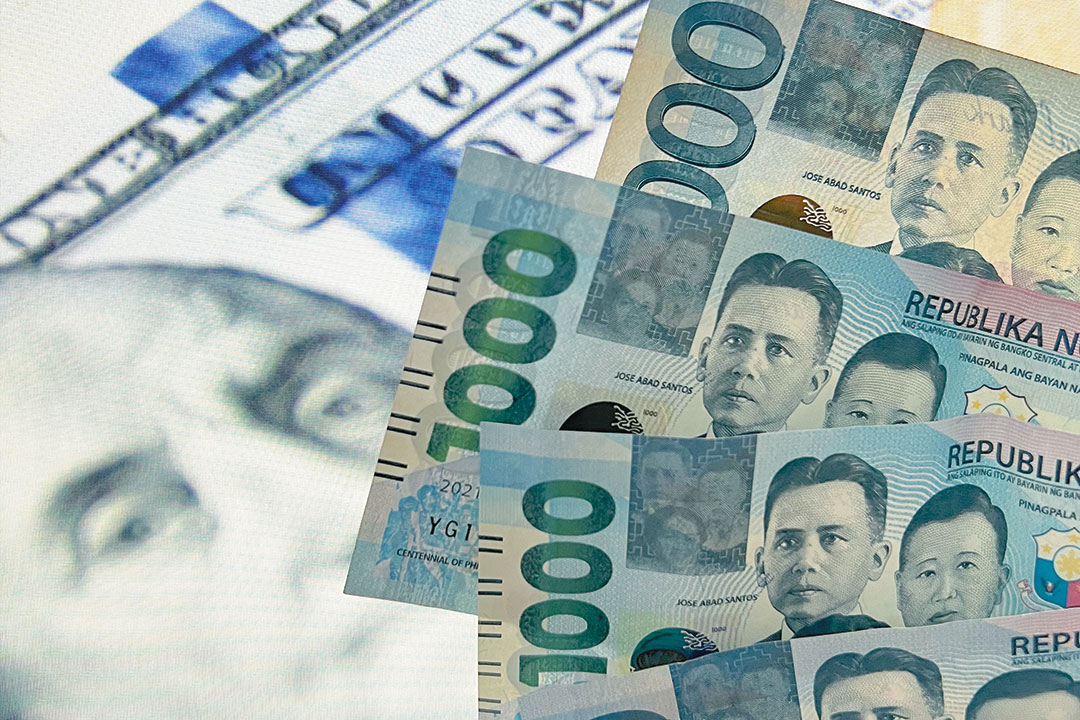




Philippines Trade Update: Exports momentum continues
 DOWNLOAD
DOWNLOAD

Quarterly Economic Growth Release: More BSP cuts to come
 DOWNLOAD
DOWNLOAD

Monthly Economic Update: Fed catches up
 DOWNLOAD
DOWNLOAD


Peso may slide to PHP 59:USD 1 if BSP cuts early

The peso may breach the PHP 59-per-dollar level if the Philippine central bank cuts rates as early as August, Fitch Solutions’ unit BMI said.
“In our view, we think that such an early cut remains out of the question, even if price pressures ease,” Shi Cheng Low, BMI Asia country risk analyst, said in a webinar on Tuesday.
If the Bangko Sentral ng Pilipinas (BSP) cuts in August, Mr. Low said this would mean that the central bank is “practically signaling that they are giving up currency stability in exchange for economic growth.”
An August rate cut could also lead to the peso breaching the PHP 59-per-dollar level and possibly even hitting the P60 mark, he added.
The peso had reached a record low of PHP 59 against the dollar in October 2022, prompting BSP intervention in the foreign exchange markets and a rate hike.
BMI said the biggest barrier to the BSP’s monetary easing is currency stability.
“The Philippine peso has emerged as one of the poorest performing currencies in the region. As such, the BSP will be extremely mindful of a preemptive return to policy easing for fear of exacerbating weakness in the already weak peso,” Mr. Low said.
The peso has been trading in the PHP 58-per-dollar range since May. The central bank has attributed the peso’s weakness to safe-haven demand for the dollar amid geopolitical tensions as well as hawkish signals by the US Federal Reserve.
“I think that currency stability will be the biggest constraint going forward and that will depend if the BSP is willing to give up on that to support the economy at least this year,” Mr. Low said.
BMI expects the BSP to only begin cutting rates in October this year for a total of 50 basis points (bps) for 2024 and 150 bps in 2025.
BSP Governor Eli M. Remolona, Jr. has said that the central bank can begin its easing cycle by August. While the BSP monitors the movements of the Fed, he has insisted its moves are independent of the US central bank.
“With the governor keeping the door open for monetary loosening in August, policy makers are holding a different view from us. They are signaling the peso weakness would not be the deciding factor to policy easing,” Mr. Low said.
“As such, the BSP could very well surprise us with a cut next month if inflationary pressures recede faster than we currently expect,” he added.
Mr. Low cited recent measures that would help further tame inflation, such as the recent executive order that slashes tariffs on rice imports.
“Our estimates show that the tariff cut can lower headline inflation by up to 1.3 percentage points over the coming months. This will, however, take some time before its full impact feeds through to rice prices,” he said.
President Ferdinand R. Marcos, Jr. last month issued an order slashing rice import tariffs to 15% from 35% until 2028 in a bid to bring down prices of the staple grain.
Meanwhile, Mr. Low also noted the impact of an August rate cut on the economy would be seen in the fourth quarter.
“If there’s a rate cut in August, then monetary transmission will go through and we’ll see some form of it or some impact of it materializing down maybe in the fourth quarter and we’ll see investment pick up once again, which obviously supports the Philippine economy.”
“But let’s just say if they cut in October, then it might be slightly too late for its impact to materialize this year at the very least,” he added.
The economy grew by 5.7% in the first quarter. The government is targeting 6-7% growth this year.
Second-quarter gross domestic product data will be released on Aug. 8. – Luisa Maria Jacinta C. Jocson, Reporter
This article originally appeared on bworldonline.com





 By BusinessWorld
By BusinessWorld